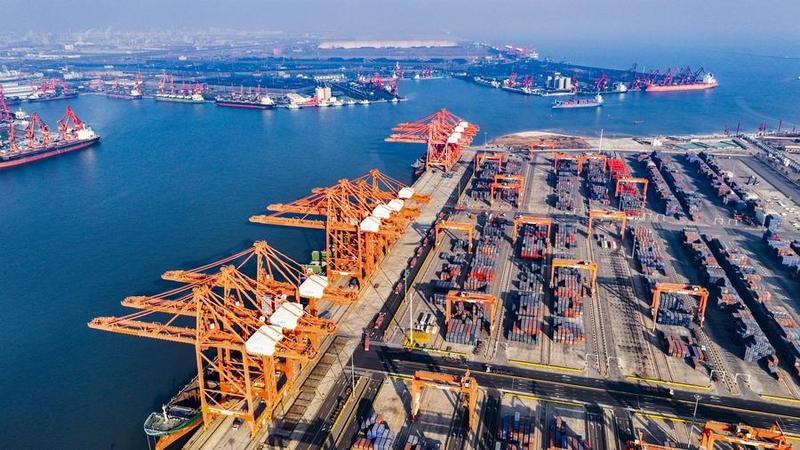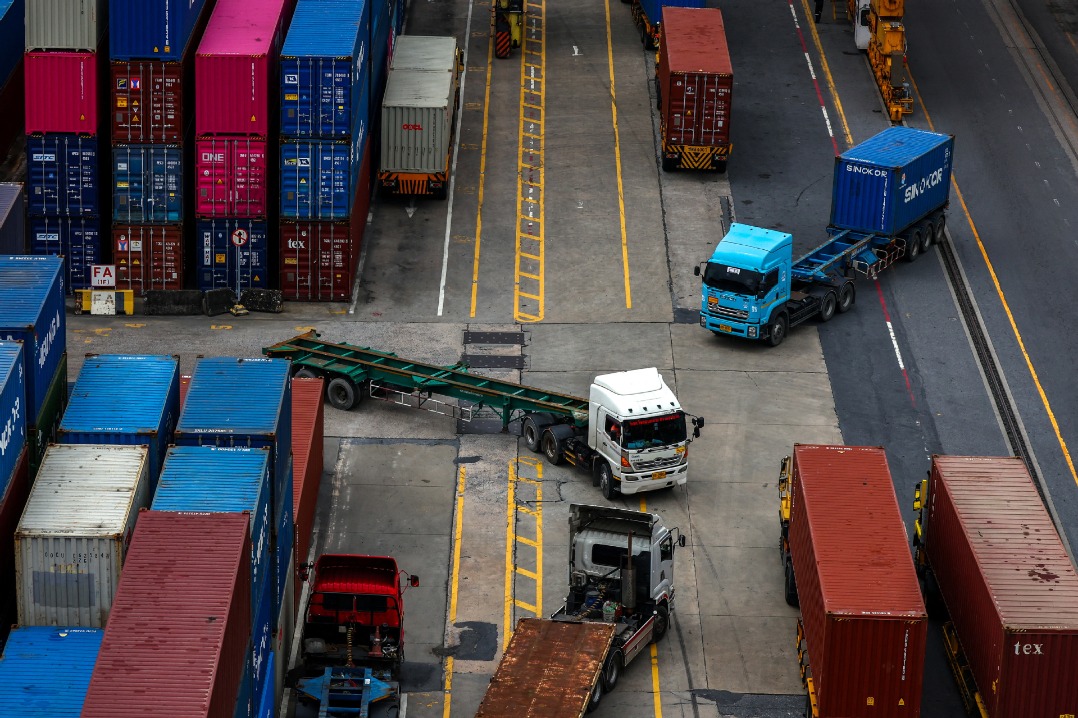Trilateral engagement key in global trade system


In an era of shifting alliances, politicized trade policies and fragmented supply chains, a realignment is underway that could well define one of the most important chapters in global commerce. China, the Gulf Cooperation Council, and the Association of Southeast Asian Nations are currently forging deeper economic, strategic and financial ties in a way that reflects not only mutual interest but also a shared response to the uncertainties currently confronting the global trade order.
While the world's attention has been focused on tariff wars and decoupling debates, these regions have been concentrating on connectivity, infrastructure and pragmatic interdependence. Together, they represent over 2.1 billion people and a combined GDP of around $25 trillion, according to data from multiple sides including World Bank, Asian Development Bank and IMF. This trilateral engagement represents a highly important component in today's global trade architecture.
Among the most consequential of these evolving relationships is the rapidly expanding partnership between China and the GCC. Two-way trade reached over $300 billion in 2023, according to China Customs Statistics Bulletin 2023, and China is now the largest trading partner for most Gulf states. Data for 2024 is not yet available. However, what began primarily as a relationship focused on hydrocarbons is now rapidly maturing into a multidimensional partnership encompassing infrastructure, industrial investment, finance and digital technologies.
Gulf sovereign wealth funds, with assets surpassing $4 trillion in data of the Sovereign Wealth Fund Institute and Global SWF 2023, are increasingly directing capital into Chinese infrastructure and technology while China is scaling up long-term energy deals and co-investing in special economic zones across the Gulf. Investment in green energy, digital infrastructure and logistics networks continues to accelerate, aligning with the goals of national diversification programmes such as Saudi Vision 2030 and the UAE Centennial Plan 2071.
Parallel to its growing relationship with China, the GCC has also been steadily building a multilayered partnership with ASEAN, home to around 680 million people and with a combined GDP exceeding $3.9 trillion, according to ASEAN Key Figures 2023.
Also in 2023, intra-ASEAN trade totaled $759 billion while foreign direct investment reached a record high of $230 billion.
This accounts for 17 percent of global FDI inflows, making ASEAN the largest FDI recipient among the developing regions, said UNCTAD World Investment Report 2024.
WTO Trade Statistics for 2024 show ASEAN now accounts for more than 7.5 percent of global exports and serves as a manufacturing and supply chain hub across sectors ranging from electronics and pharmaceuticals to automotive components and agri-tech.
As traditional trade corridors come under strain, ASEAN offers access to consumer markets, digital innovation and advanced manufacturing ecosystems while Gulf countries provide ASEAN with much-needed capital investment, energy resources and, increasingly, strategic co-development in infrastructure and green technologies.
What makes all of this so particularly significant is the convergence of the deepening China-GCC and ASEAN-GCC relationships into a broader trilateral architecture. Many see this triangular dynamic as a path forward amid the global trade fragmentation prompted by tariff regime shifts, supply chain disruptions and growing geopolitical frictions. This emerging framework could evolve into a pragmatic model of economic cooperation that is rooted in infrastructure connectivity, cross-border capital flows and regulatory harmonisation.
Initiatives such as joint investment funds, co-managed special economic zones and digitally integrated logistics corridors could provide the building blocks of such a model. Moreover, by prioritising openness, trade facilitation and investment liberalization, the China-GCC-ASEAN triangle can strengthen the broader case for multilateralism and reinforce principles of the World Trade Organization at a time when many global institutions are facing severe headwinds. Their combined influence representing some of the world's fastest-growing economies positions this group of countries not only as regional actors but active contributors to shaping a more inclusive and decentralized global trade order.
A very real story is unfolding across Riyadh, Abu Dhabi, Beijing, Jakarta and other capitals in the region where capital and connectivity are increasingly converging. This is visible through a growing network of bilateral energy deals, sovereign wealth fund co-investments, joint infrastructure projects and digital cooperation platforms. Whether through Chinese participation in Gulf logistics corridors, Emirati investment in Southeast Asian fintech or ASEAN support for cross-border green energy supply chains, each capital is playing a distinct yet interconnected role in shaping a new, multipolar economic order.
As the world edges toward a more fragmented future, the China-ASEAN-GCC triangle may well emerge as a very real framework capable of opportunity and shared prosperity across three of the world's most vital and ambitious regions.
The author is president and CEO of Gulf Analytica based in Dubai, the United Arab Emirates. The views do not necessarily reflect those of China Daily.


































